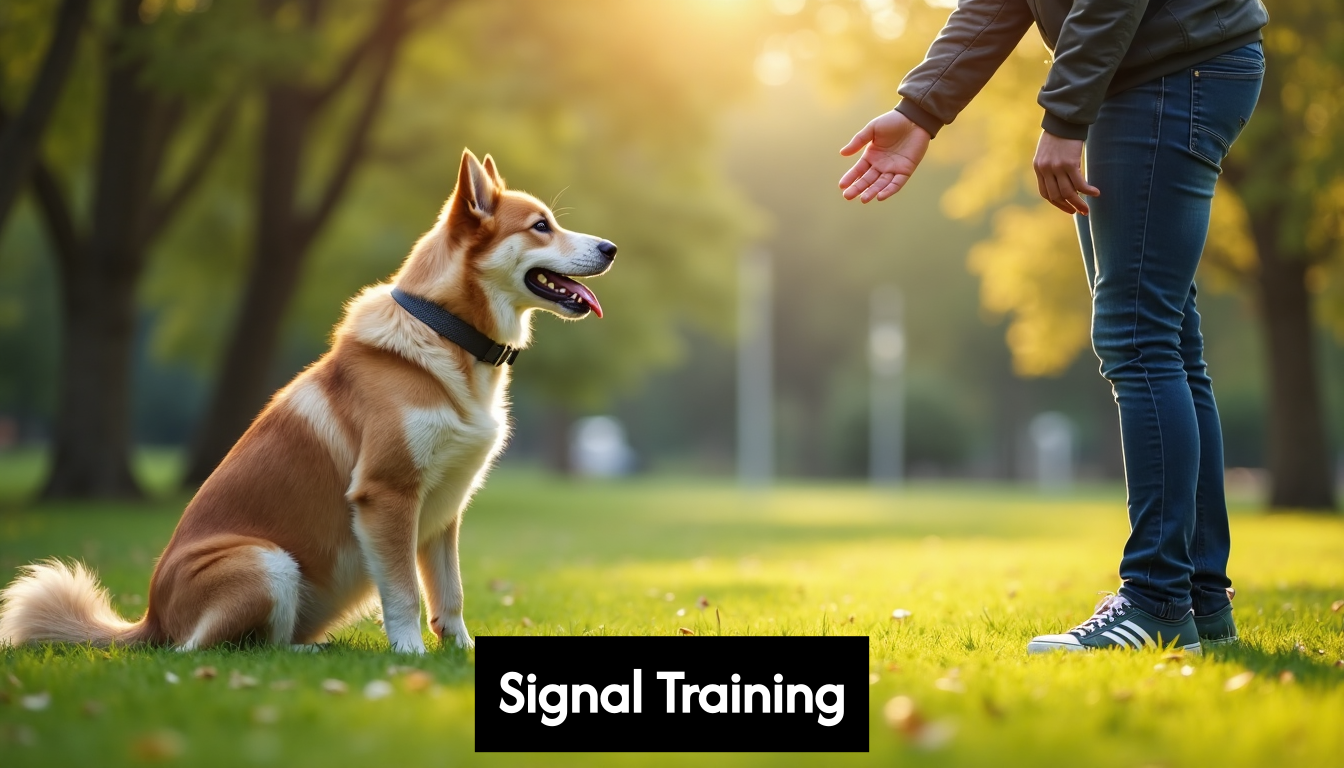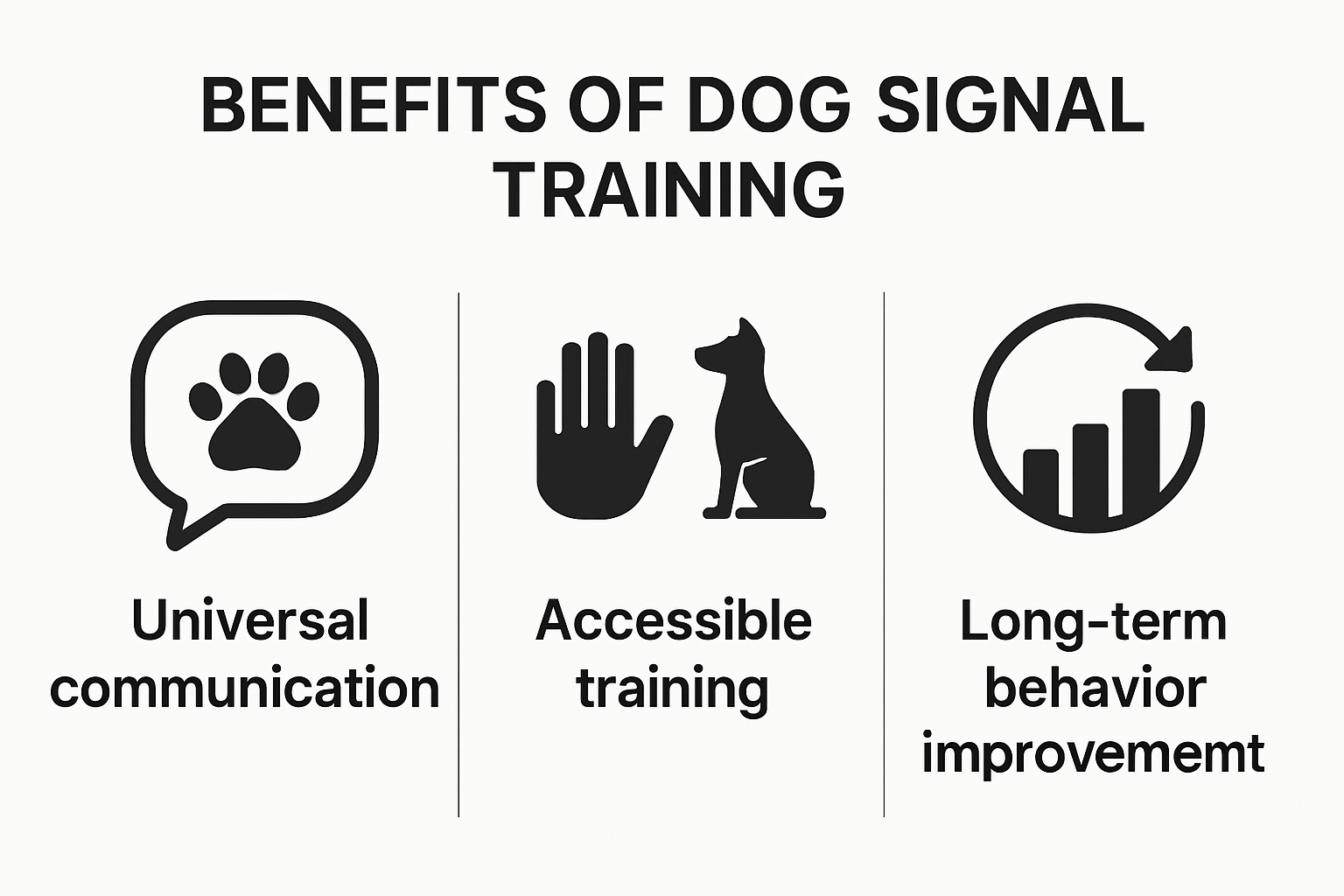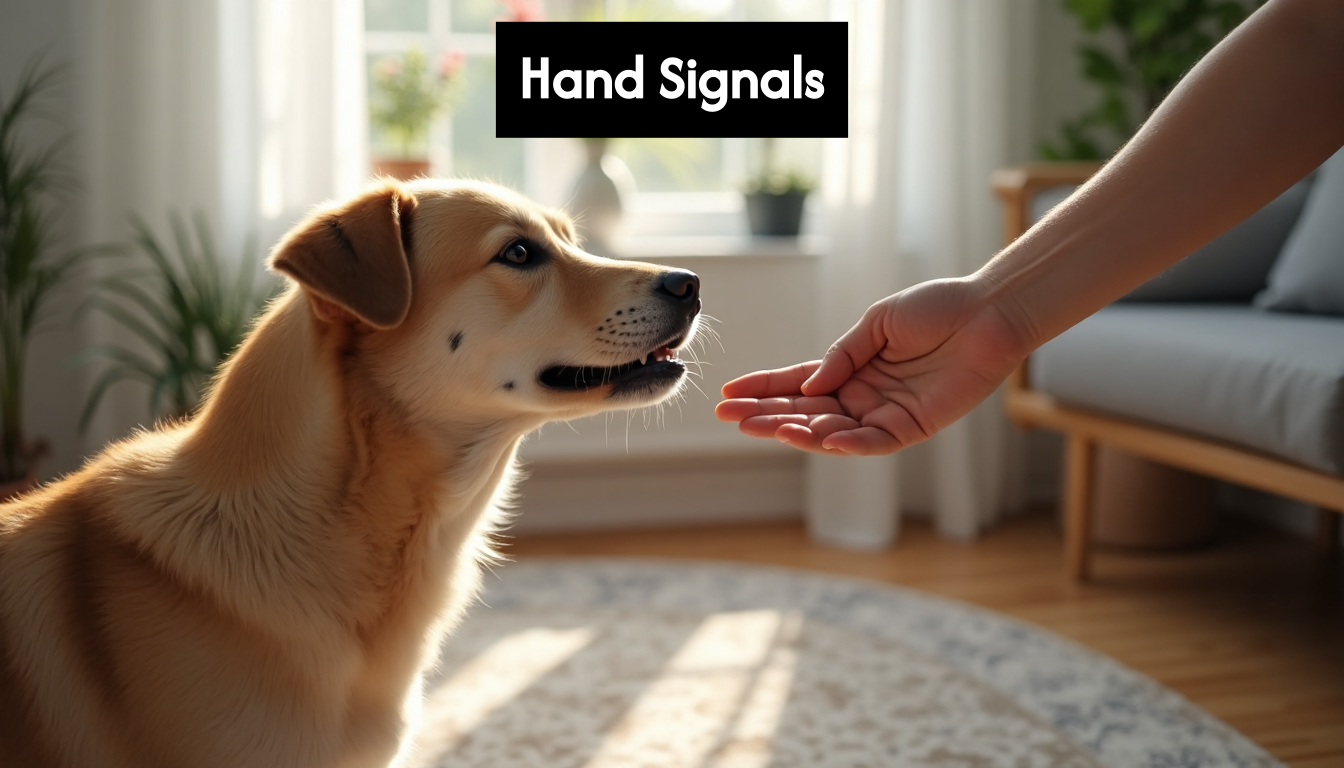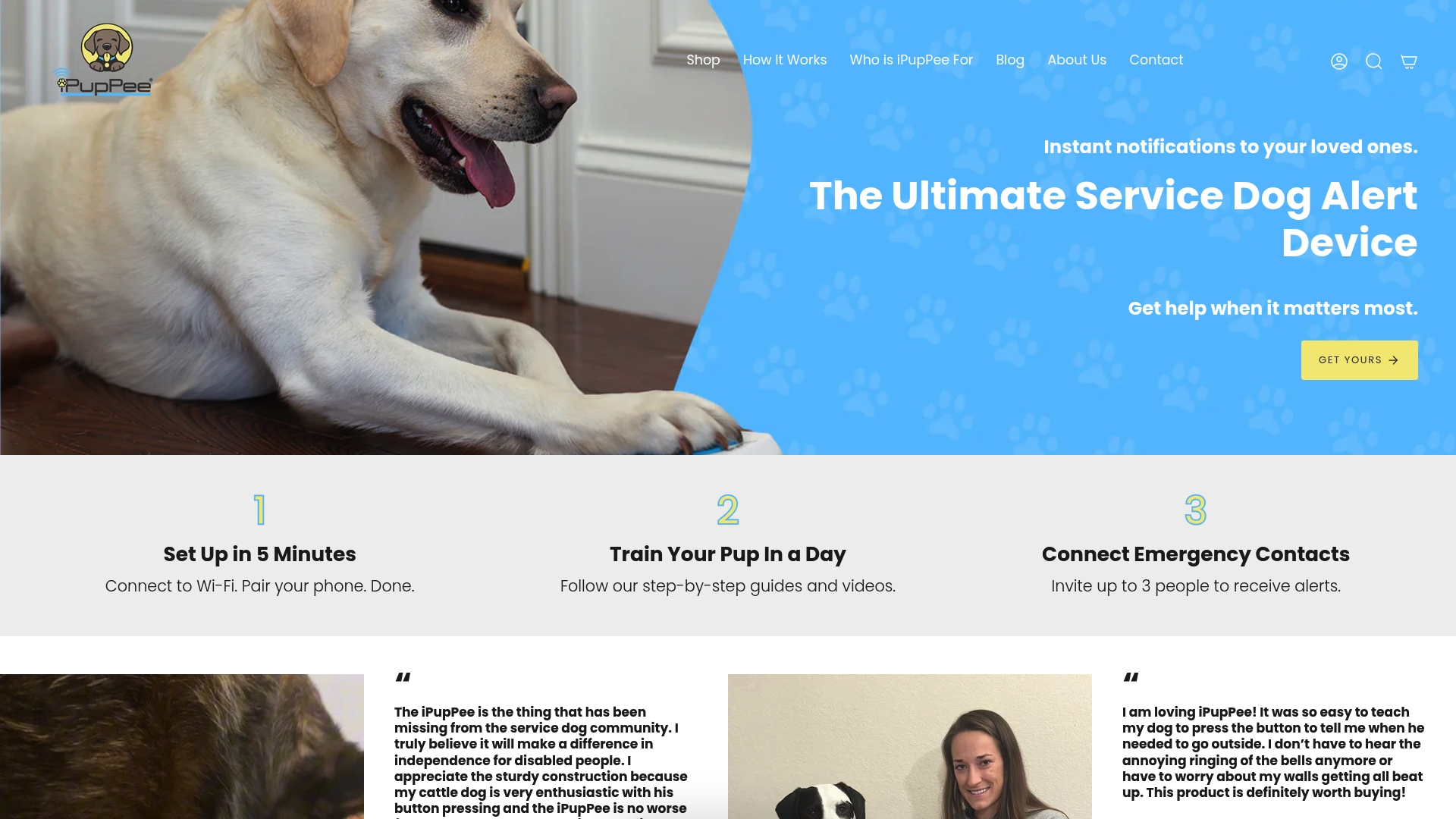
Dog owners are always searching for the best ways to communicate with their furry friends. Here is something you might not expect. Research shows dogs can achieve up to 99 percent reliability when responding to hand signals compared to just 82 percent with voice commands. Hand signals are not just helpful for deaf or senior pups—they provide a universal, distraction-proof language any owner can use, opening up a whole new level of understanding with your dog.
Table of Contents
- Benefits Of Dog Signal Training For All Types Of Owners
- Essential Hand Signals And Their Meanings
- Step-By-Step Dog Signal Training Techniques
- Tips For Special Needs, Seniors, And Rescue Dogs
Quick Summary
| Takeaway | Explanation |
|---|---|
| Universal communication advantages | Hand signals provide a clear, consistent way to communicate with dogs across different environments, enhancing the bond between owners and their pets. |
| Adaptive training for diverse owner profiles | Signal training is suitable for all types of dog owners, including service dog handlers and seniors, allowing for effective and tailored communication strategies. |
| Long-term behavioral benefits | Training dogs with hand signals promotes improved focus, reduced anxiety, and better obedience, fostering stronger understanding between dog and owner. |
| Importance of clarity and consistency | Successful signal training hinges on clear, distinct hand gestures and consistent use by all members of the household to prevent confusion. |
| Special needs considerations | Tailored approaches for deaf, senior, and rescue dogs leverage signal training to establish trust and effective communication, accommodating individual circumstances. |
Benefits of Dog Signal Training for All Types of Owners
Dog signal training transforms communication between humans and their canine companions, offering a powerful method of interaction that transcends traditional verbal commands. This approach provides numerous advantages for dog owners across different experience levels, living situations, and skill requirements.
Universal Communication Advantages
Signal training creates a robust communication system that works effectively in multiple environments. Whether you are a senior living alone, a person with hearing challenges, or an active pet owner in noisy settings, hand signals provide clear instructions that dogs can understand quickly. According to research on global dog training trends, positive reinforcement methods like signal training build trust and strengthen the human animal bond.
Key communication benefits include:
- Consistency: Hand signals remain constant regardless of background noise or distance
- Clarity: Visual commands reduce misunderstandings common with verbal instructions
- Discretion: Silent signals allow subtle communication in public spaces

Training Accessibility for Different Owner Profiles
Signal training proves remarkably adaptable across various owner demographics. Professional dog training organizations emphasize that these techniques work equally well for service dog handlers, rescue dog owners, and first time pet parents. The global market for specialized dog training services is expanding, with projections showing a compound annual growth rate of 9.8% from 2023 to 2030, indicating growing recognition of advanced training methods.
New dog owners benefit from signal training by establishing clear communication foundations early. Service dog handlers gain precise control mechanisms that enhance safety and independence. Senior pet owners appreciate the quiet, controlled approach that allows them to manage their dogs effectively without vocal strain.
Long Term Behavioral Impact
Beyond immediate communication benefits, signal training contributes to comprehensive behavioral development. Dogs trained with consistent visual signals demonstrate improved focus, reduced anxiety, and enhanced cognitive engagement. These skills translate into better overall obedience and a deeper understanding of human expectations.
Training experts recommend starting signal training early and maintaining consistent practice. The process not only teaches specific commands but also strengthens the intellectual connection between dogs and their owners. Learn more about advanced dog training techniques to complement your signal training journey.
Whether you have a high energy working dog or a companion pet, signal training offers a universal language of understanding that bridges communication gaps and builds mutual respect.
Essential Hand Signals and Their Meanings
Mastering hand signals requires understanding both the visual cue and the precise technique for communicating with your dog. These signals form a universal language that bridges communication gaps between humans and their canine companions.
Basic Command Hand Signals
Dog training experts have developed a standardized set of hand signals that are both intuitive and effective. Research from dog training specialists indicates that dogs can achieve up to 99% reliability with hand-only cues, compared to 82% with voice commands. This high success rate makes hand signals an invaluable training tool.
Core basic command signals include:
- Sit: Flat palm facing down, slowly moved upward from the dog’s nose level
- Stay: Open palm facing forward at chest height
- Come: Arm extended out to the side with a sweeping motion toward your body
- Down: Flat hand moved downward from chest level to the ground

Advanced Signal Techniques
Professional trainers recommend developing a consistent approach to hand signals. Many signals draw inspiration from American Sign Language, which provides a structured and recognizable framework. The key is maintaining absolute consistency across all household members to prevent confusion.
Signal training goes beyond simple commands. Advanced techniques include directional signals for guiding dogs in specific paths, attention signals to maintain focus, and nuanced communication for complex tasks. Service dog handlers often develop more intricate signal systems that allow for precise communication in challenging environments.
Practical Implementation Strategies
Successful hand signal training requires patience and systematic approach. Start by pairing verbal commands with hand signals, gradually reducing vocal cues until the dog responds exclusively to visual signals. Learn more about advanced training methods to refine your technique.
Practice in various environments to ensure your dog understands signals regardless of distractions. Short, frequent training sessions work best. Begin with 5-10 minute intervals, gradually increasing complexity and duration. Reward-based reinforcement remains crucial ensure your dog associates signals with positive experiences.
Remember that each dog learns differently. Some may pick up hand signals quickly, while others require more repetition and patience. Consistency, positive reinforcement, and understanding your dog’s unique learning style are the cornerstones of successful signal training.
Step-by-Step Dog Signal Training Techniques
Successful dog signal training requires a strategic and patient approach that breaks down complex communication into manageable steps. By understanding the fundamental principles of canine learning, owners can develop a robust training system that builds trust and understanding.
Establishing Training Foundations
Research on dog learning techniques emphasizes the importance of consistent, clear communication. Begin by selecting specific hand signals for each command and ensure every household member uses identical gestures. Start with basic commands like sit, stay, and come, pairing each hand signal with a verbal cue initially.
Key initial training principles:
- Clarity: Use distinct, deliberate hand movements
- Consistency: Always use the same signal for each command
- Timing: Reward immediately after correct signal response
Progressive Signal Training Strategy
Breaking complex behaviors into smaller steps ensures successful learning. Canine learning experts recommend a dynamic approach that incorporates positive reinforcement. Begin with short 5-10 minute training sessions, focusing on one signal at a time. Gradually increase complexity and duration as your dog masters each command.
Start by getting your dog’s attention through eye contact or a gentle touch. Demonstrate the hand signal slowly and clearly. When your dog performs the correct action, immediately reward with treats, praise, or play. Repeat this process multiple times, gradually reducing verbal cues until your dog responds solely to the hand signal.
Advanced Training Techniques
Once basic signals are mastered, explore more advanced training methods to enhance communication. Practice signals in various environments with increasing levels of distraction. This helps your dog generalize the learned behavior and respond consistently regardless of surroundings.
For dogs with specific needs or service dog training, develop more nuanced signal systems. Some handlers create custom signals for complex tasks, requiring additional patience and specialized training techniques. Each dog learns differently, so remain flexible and attentive to your individual dog’s learning pace and style.
Remember that signal training is more than just teaching commands. It’s about building a deeper, more intuitive communication system that strengthens the bond between you and your dog. Approach each training session with patience, positivity, and a commitment to understanding your canine companion’s unique learning journey.
Tips for Special Needs, Seniors, and Rescue Dogs
Signal training offers unique benefits for dogs with special circumstances, providing adaptive communication strategies that can dramatically improve their quality of life and relationship with their owners. Each group requires a tailored approach that respects their individual challenges and potential.
Deaf Dog Communication Strategies
Experts in deaf dog training emphasize the critical importance of establishing eye contact before introducing any hand signals. Deaf dogs rely entirely on visual communication, making signal training not just beneficial but essential. Begin by teaching a visual marker that captures their attention consistently, such as an open hand flash or a distinct wave.
Key strategies for deaf dogs include:
- Attention Training: Develop a reliable method to gain visual focus
- Clear Signals: Use large, distinct hand movements
- Positive Reinforcement: Reward immediate visual acknowledgment
- Vibration Cues: Incorporate gentle touch or floor vibrations to supplement visual signals
Training Approaches for Senior Dogs and Rescue Animals
Professional trainers recommend keeping training sessions short, engaging, and patient for older or previously traumatized dogs. Rescue dogs often come with complex emotional backgrounds that require extra sensitivity. Signal training can provide a gentle, non-threatening method of communication that helps build trust and confidence.
Start with extremely brief training sessions of 5-10 minutes, using high-value treats and maintaining a calm environment. For rescue dogs with potential anxiety or past negative experiences, focus on creating positive associations with each hand signal. Move slowly, use soft gestures, and always allow the dog to set the pace of learning.
Specialized Service Dog Signal Training
Advanced service dog training techniques require a more nuanced approach to signal communication. Dogs supporting individuals with disabilities need to learn complex, precise signals that can communicate multiple types of instructions and potential emergency responses.
For service dogs, signal training goes beyond basic commands. Handlers must develop a comprehensive visual language that can communicate subtle but critical information. This might include signals for medical alert, navigation assistance, or specific task completion. The training process demands exceptional patience, consistency, and a deep understanding of the individual dog’s capabilities and the handler’s unique needs.
Whether working with a deaf dog, a senior companion, a rescue animal, or a service dog, signal training represents a powerful tool for building understanding. The key is approaching each training relationship with empathy, respect, and a commitment to adapting techniques to the individual dog’s learning style and emotional landscape.
Frequently Asked Questions
What are the benefits of dog signal training?
Dog signal training enhances communication between owners and dogs, providing consistency, clarity, and discretion in various environments. It improves focus, reduces anxiety, and promotes better obedience in dogs.
How can I teach my dog basic hand signals?
Start by pairing verbal commands with specific hand signals, gradually reducing the use of vocal cues. Use clear, distinct movements and reward your dog immediately after they respond correctly to the signal.
What strategies should I use for training deaf dogs with hand signals?
For deaf dogs, establish eye contact before introducing signals. Use large, clear hand movements and incorporate positive reinforcement. You may also use gentle vibrations or physical cues to supplement visual signals.
Can older or rescue dogs benefit from signal training?
Yes, older dogs and rescue animals can greatly benefit from signal training. Keep sessions short and positive, focusing on building trust and confidence through clear communication and patience.
Take Your Dog’s Communication Further: Experience Effortless Understanding
If you have ever felt frustrated when your dog misses a hand signal or struggles in noisy environments, you are not alone. This guide shows how hand signal training lifts barriers, reduces confusion, and deepens your bond. But what if you could make communication with your dog even more reliable and give both of you extra confidence every day? Imagine bringing those training breakthroughs to your real-life routine with a tool designed for true independence and safety.

The iPupPee device helps you and your dog communicate instantly through a simple press of a button—ideal for service dog handlers, seniors, or anyone with a dog that needs to alert you quickly and clearly. Thousands of people, including those with special needs and newly adopted rescue pets, are building trust and security with our unique communication solution. Ready for fewer missed signals and more peace of mind? Discover the device hundreds are already using, read real customer stories, or learn more about how iPupPee transforms dog-owner interactions today.

